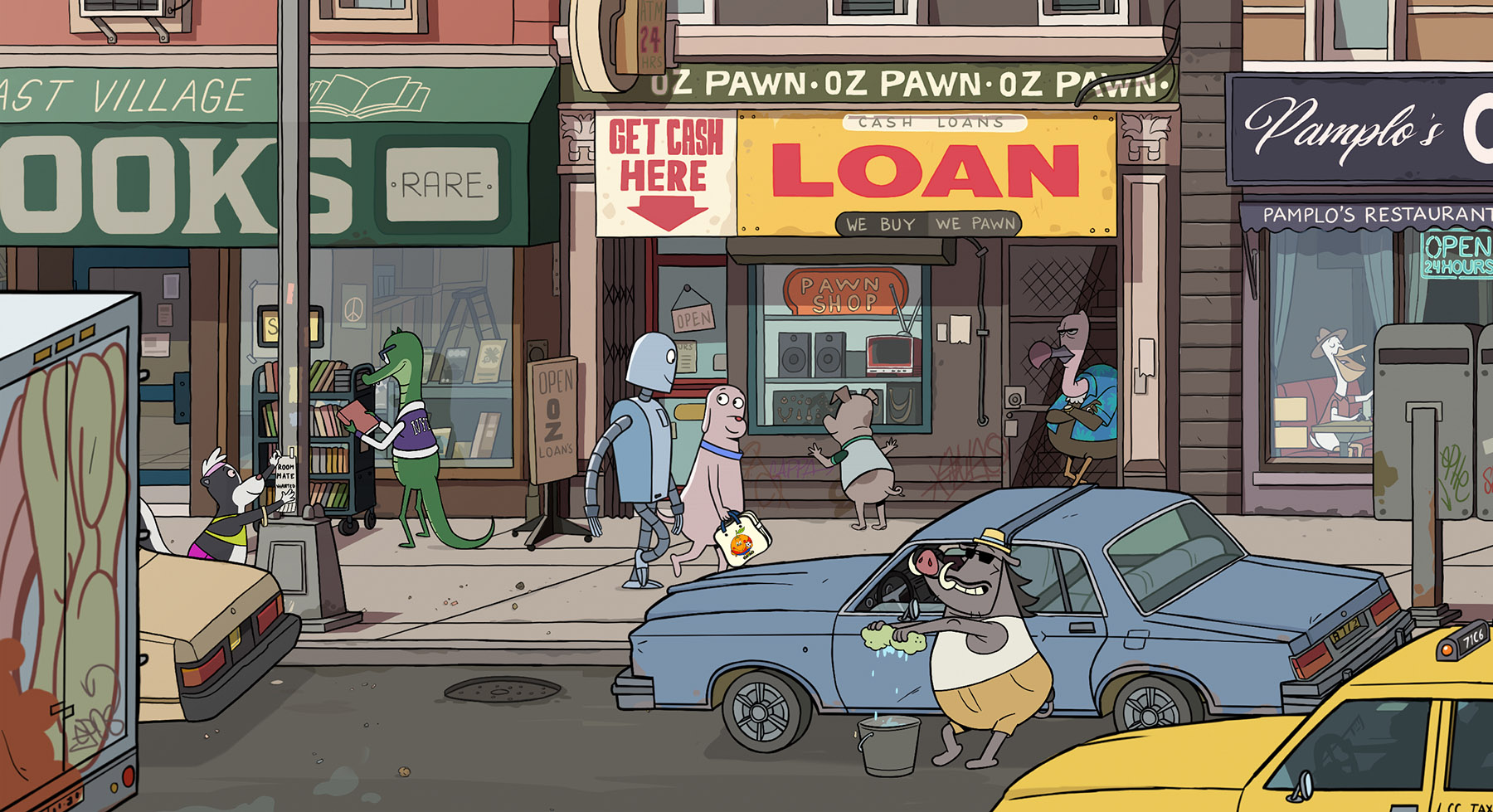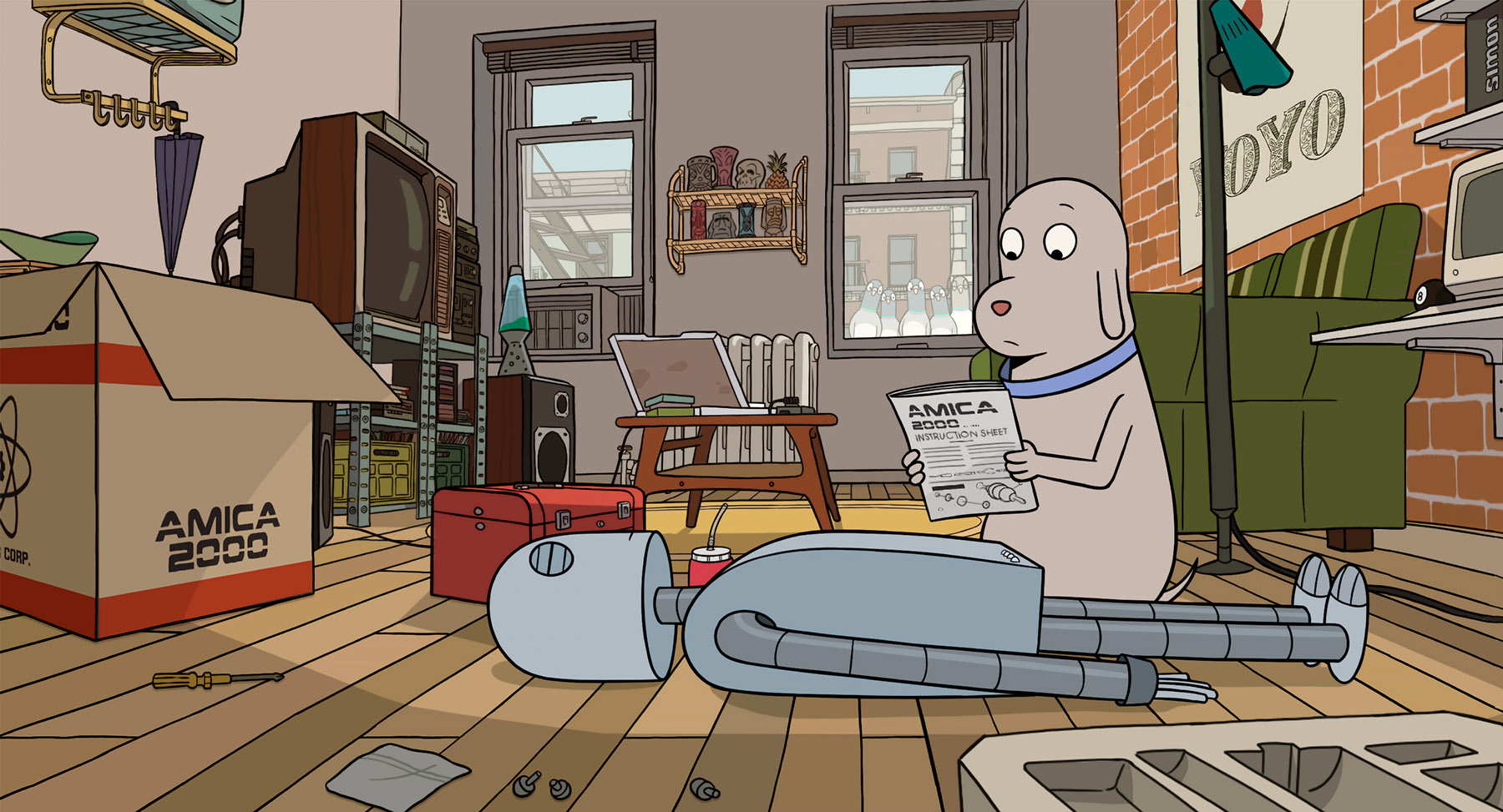
Spanish filmmaker Pablo Berger is no stranger to silent film. Or rather, he has worked expertly without dialogue in the past, on his 2012 breakout Blancanieves, and hence is eminently qualified to adapt American illustrator Sara Varon’s comic Robot Dreams. It’s rare to find a family film that is free of pandering messages, condescension and predictable storytelling, so when a truly fresh, funny and moving family film does come along, it’s something to be celebrated. Berger’s first attempt at animation won two Goya Awards and was a nominee for best animated feature at March’s Oscars. Those accolades don’t come close to indicating just how remarkable a film Robot Dreams really is.
The story is as simple as the artwork. In mid-1980s Brooklyn, Dog lives a lonely life in his little flat overlooking bustling New York City, his neighbors, and all their friends. One typically lonely evening, Dog is inspired by a late-night television ad to buy a pal from DIY manufacturer Amica 2000. His robot arrives, and before you know it, Dog and Robot are out and about, roller skating in the park, riding the subway and going to Coney Island. More importantly, the pair forms an instant and rock-solid bond. It’s at Coney, however, that Dog makes a nearly fatal error and is forced to leave Robot behind. Then more disaster strikes when the park closes for the season. While he waits for rescue, Robot dreams of reunion with his best friend, and Dog tries to make some kind of life again.
ALSO READ: Political thriller plumbs psychological depths
To say more about where Robot Dreams goes, and the anti-Hollywood — nay, anti-Disney — turns it takes would be to strip the film of the pleasures of its thought-provoking narrative path, and more crucially its incredible emotional punch. Robot Dreams is the kind of animated adventure Pixar used to make, one that balanced genuine wit with relatable human instincts. Berger picks up that torch (for a relatively minuscule $5.5 million), making a film whose visuals appeal to and engage very small children (ironically, author Varon’s world is Disney-esque in its anthropomorphism), whose story speaks to slightly older children and adolescents, and whose deeper themes exploring friendship, loss, recovery and acceptance will resonate with everyone else.

It’s something of a magic trick, considering Berger and his art director José Luis Ágreda’s vaguely ligne claire — literally “clear line”, think Hergé and Tintin, or Chris Ware and Jimmy Corrigan — aesthetic is deceptive in how vividly it showcases its humanism. Every sequence in the 2D-animated Robot Dreams is packed with life, drawn frame-by-frame on the bright color palette, in which Berger and Ágreda find the space for little moments that add texture to Dog and Robot’s world — from changing behind a towel at the beach to “names” on door buzzers.
ALSO READ: Korea’s rock-star cop soldiers on
Those visuals are complemented so perfectly by the evocatively layered soundscape that you barely notice the absence of spoken dialogue. It’s not missed because the little visual details tell the story as expertly as any words could. Also, they’re set to a soundtrack (music editor Yuko Harami makes equally expert use of Earth, Wind & Fire’s joyous September and the traditional ballad Danny Boy) and score (plaintive and urban jazz by Alfonso de Vilallonga) that effortlessly cap off the mood without anyone realizing it. There’s no need for plucky piano or swelling strings to signal charming misadventures or sorrow.
This is animated storytelling at its best, and despite Robot Dreams’ ultimately contemplative tone and bittersweet ending, it’s the kind of smart, funny, sincere family fare that’s been absent from our screens for too long.


